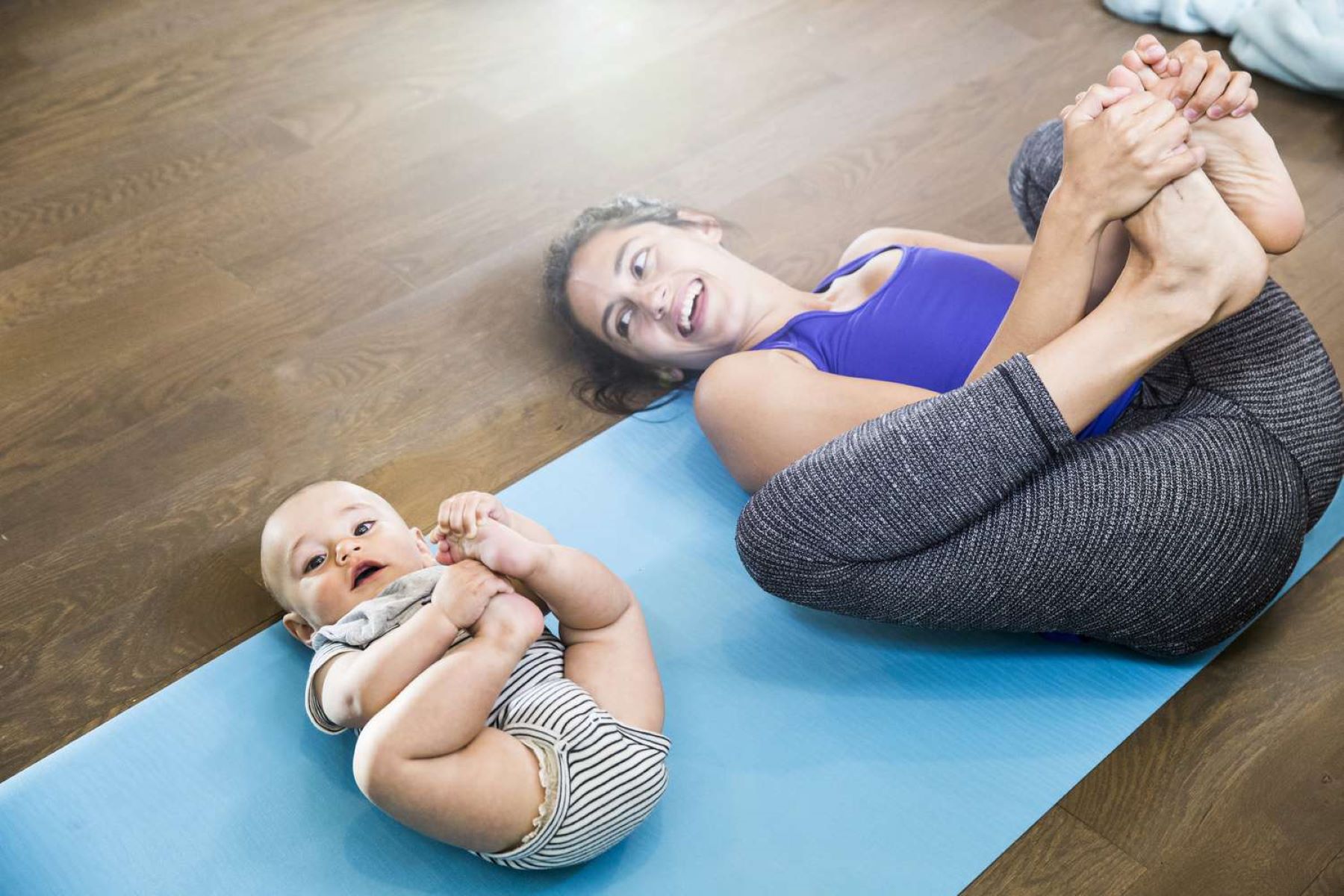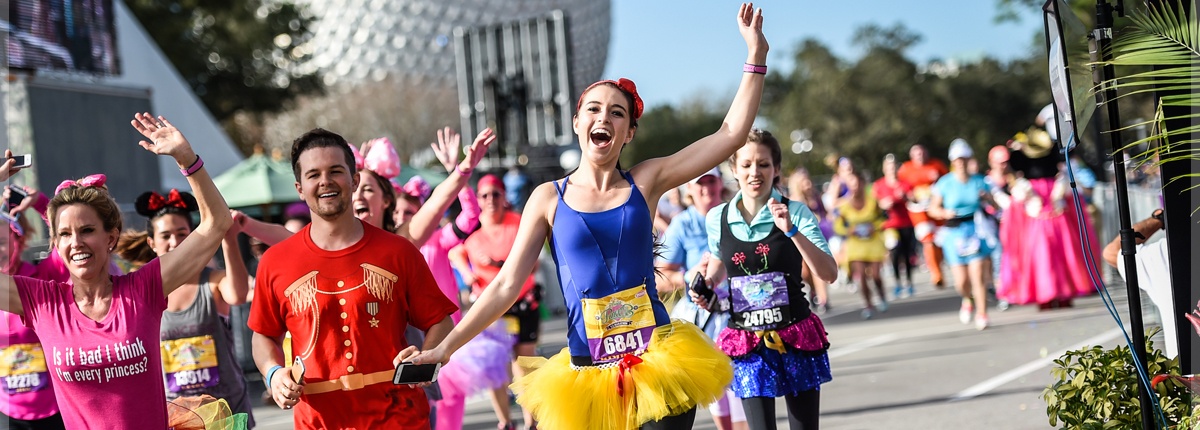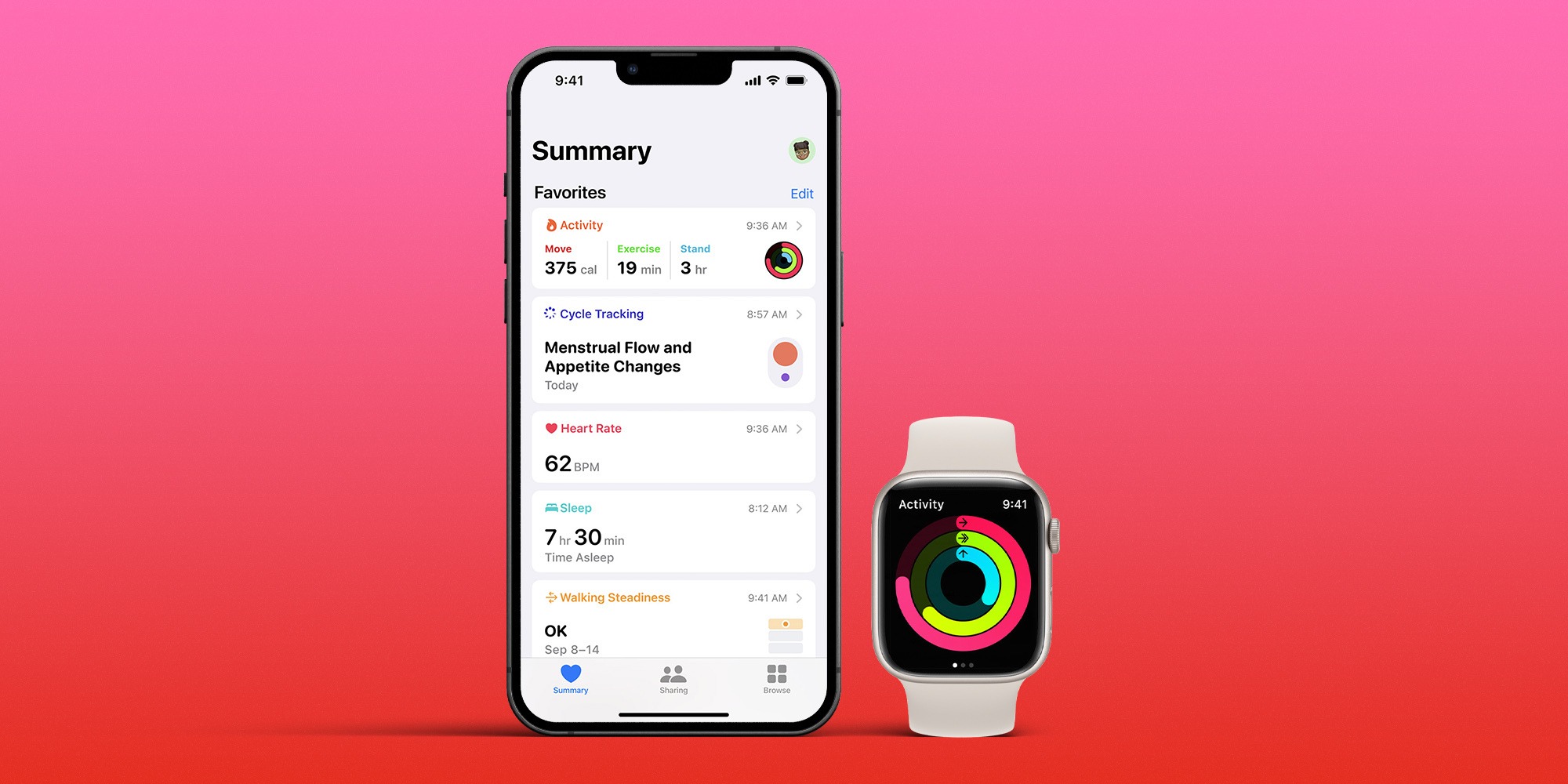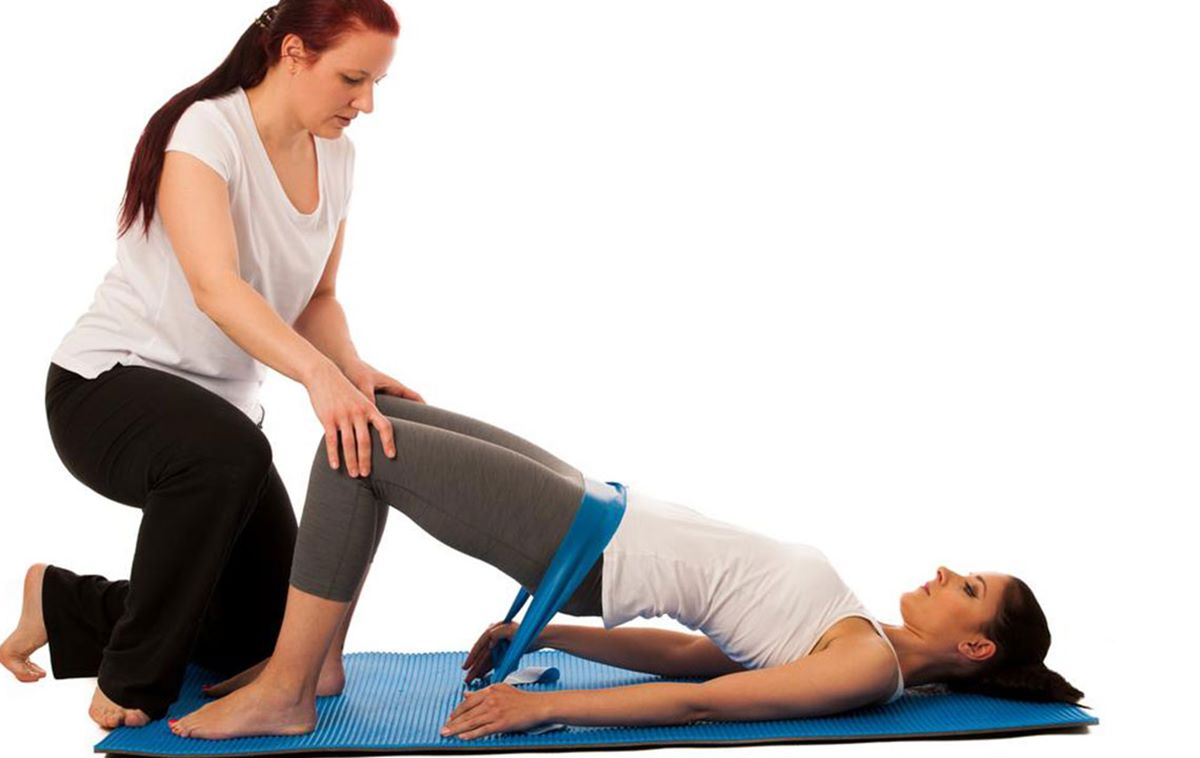Home>Misc>Featured>How Long After Giving Birth Can You Workout


Featured
How Long After Giving Birth Can You Workout
Modified: August 21, 2023
Discover when you can start exercising after childbirth. Get expert tips and advice on postpartum workouts from our featured experts.
Introduction
Welcome to the wonderful journey of motherhood! After giving birth to your little one, you may be wondering when you can get back to your pre-pregnancy fitness routine. The good news is that postpartum exercise can offer numerous benefits for your physical and mental well-being.
Engaging in regular physical activity after childbirth can help you regain strength, improve your mood, boost energy levels, and promote weight loss. It can also speed up your recovery and restore core strength, which is essential for preventing and alleviating postpartum issues like back pain and pelvic floor dysfunction.
While the desire to get back in shape is understandable, it’s important to approach postpartum exercise with caution. Your body has gone through significant changes during pregnancy and childbirth, and it needs time to heal. Before diving into a workout routine, there are a few considerations you should keep in mind to ensure a safe and effective transition back to fitness.
In this article, we will explore the benefits of postpartum exercise, discuss important factors to consider before starting, delve into the appropriate timing for exercise post-birth, highlight considerations for C-section recovery, discuss different types of postpartum exercises, provide a sample exercise routine, and offer tips for safe and effective postpartum workouts.
Remember, every woman’s postpartum experience is unique, and it’s essential to listen to your body. Consulting with your healthcare provider before starting any exercise program is always recommended, especially if you had a complicated pregnancy or delivery.
Benefits of Postpartum Exercise
Postpartum exercise offers a wide range of benefits for new moms. Here are some of the key advantages:
- Physical Recovery: Pregnancy and childbirth can take a toll on your body. Engaging in regular exercise after giving birth can aid in your physical recovery. It promotes blood circulation, which can help to reduce swelling and improve healing. Additionally, exercise can strengthen your muscles and joints, leading to improved overall fitness.
- Mental Well-being: Adjusting to life with a newborn can be overwhelming and emotionally challenging. Exercise releases endorphins, also known as “feel-good” hormones, which can help improve your mood and reduce stress levels. It can also provide a sense of accomplishment and boost your confidence and self-esteem.
- Weight Management: Postpartum exercise can assist in shedding the pregnancy weight and getting back to your pre-pregnancy shape. It helps to burn calories and boost metabolism, facilitating healthy weight loss. However, it’s important to approach weight management with a balanced and sustainable mindset, focusing on overall health and well-being rather than solely on appearance.
- Boost in Energy Levels: Sleep deprivation and constant demands of caring for a newborn can leave you feeling tired and low on energy. Surprisingly, exercise can actually increase your energy levels. Physical activity stimulates the production of endorphins, which provide a natural energy boost. Regular exercise can also enhance your stamina and endurance, helping you keep up with the demands of motherhood.
- Management of Postpartum Depression: Postpartum depression affects many new mothers, and exercise can be an effective tool in managing its symptoms. Physical activity increases the production of serotonin, which is a neurotransmitter that plays a crucial role in mood regulation. Exercise can also provide a much-needed distraction from negative thoughts and improve overall mental well-being.
These are just a few of the many benefits that postpartum exercise can offer. However, it’s important to keep in mind that every woman’s journey is unique, and the effects of exercise may vary. It’s always best to listen to your body and gradually ease back into a fitness routine after giving birth.
Considerations Before Starting Postpartum Exercise
Before embarking on a postpartum exercise routine, it’s crucial to consider these factors to ensure a safe and effective transition:
- Medical Clearance: Obtain clearance from your healthcare provider before starting any exercise program, especially if you had a complicated pregnancy, delivery, or any medical conditions. Your healthcare provider can assess your specific situation and provide guidance on when it’s safe to begin exercising.
- Healing Time: Give your body ample time to heal after childbirth. The length of the healing period varies for each woman, and it’s essential to listen to your body and not rush the process. Respect the changes your body has undergone and allow for gradual progress in your fitness journey.
- Postpartum Bleeding: Postpartum bleeding, also known as lochia, is a normal part of the recovery process. It’s important to wait until the bleeding has significantly reduced or stopped completely before starting intense physical activity. Consult with your healthcare provider for guidance on when it’s safe to resume exercise.
- Pelvic Floor Health: The pelvic floor muscles undergo significant strain during pregnancy and childbirth. Strengthening these muscles is crucial to prevent issues like urinary incontinence and pelvic organ prolapse. Before starting any high-impact exercises, ensure your pelvic floor muscles are healed and strong. Consider working with a pelvic floor physiotherapist to assess and address any potential issues.
- Diastasis Recti: Diastasis recti is a separation of the abdominal muscles that commonly occurs during pregnancy. Before engaging in exercises that target the core, it’s important to check for diastasis recti and consult with a healthcare or fitness professional for appropriate exercises to help close the gap and strengthen the abdominal muscles.
- Breastfeeding Considerations: If you’re breastfeeding, it’s important to consider the impact of exercise on milk supply and breastfeeding comfort. Plan your exercise routine around your breastfeeding schedule to avoid discomfort or potential issues with milk production. Stay hydrated and wear a supportive sports bra to minimize breast discomfort during physical activity.
By taking these considerations into account and seeking guidance from healthcare professionals, you can ensure a safe and effective transition back to exercise postpartum. Remember, everyone’s postpartum journey is different, so listen to your body, prioritize your health, and make modifications as needed.
Timing of Postpartum Exercise
The timing of when you can start exercising postpartum varies for each woman and depends on factors such as the type of delivery, any complications experienced during pregnancy or childbirth, and individual healing rates. Here are some general guidelines to consider:
- Vaginal Delivery: For women who had a vaginal delivery without complications, it is generally safe to start light exercises as soon as they feel comfortable. This may even be within the first few days after giving birth. However, it’s important to start gradually and listen to your body. Begin with gentle movements, such as walking or gentle stretching, and gradually increase the intensity and duration of your workouts over time.
- Cesarean Section: If you had a cesarean section, it may take longer for your body to heal compared to a vaginal birth. It’s important to follow your healthcare provider’s guidelines regarding resuming exercise. Typically, light exercises like walking can be started within the first couple of weeks, but more intense activities should be avoided until you have fully recovered and received medical clearance.
- Complications or Risk Factors: If you experienced any complications during pregnancy or childbirth, or if you have any underlying health conditions, it’s crucial to consult with your healthcare provider before starting any exercise program. They can assess your specific situation and provide guidance on when it’s safe for you to begin exercising.
- Listen to Your Body: Regardless of the type of delivery or any complications, it’s important to listen to your body and not push yourself too hard. Pay attention to any pain, discomfort, or excessive fatigue. If you experience any unusual symptoms or concerns, consult with your healthcare provider.
- Gradual Progression: Start with low-impact exercises and gradually increase the intensity and duration of your workouts as your body becomes stronger. This gradual progression allows for proper healing and reduces the risk of injury.
- Postpartum Exercise Specialists: Consider working with a postpartum exercise specialist or a qualified fitness professional with experience in postpartum fitness. They can provide personalized guidance and ensure that you’re performing exercises correctly and safely.
Remember, the most important thing is taking care of yourself and allowing your body time to heal. Prioritize rest and listen to your healthcare provider’s advice. With patience and gradual progression, you can safely and effectively return to exercise postpartum.
C-section Recovery and Exercise
Recovering from a cesarean section (C-section) requires special attention and care. Here are some considerations to keep in mind when it comes to C-section recovery and exercise:
1. Follow Your Healthcare Provider’s Guidance: It’s crucial to follow your healthcare provider’s advice and guidelines regarding when to begin exercise post-C-section. They will take into account factors such as your incision healing, pain levels, and overall recovery progress.
2. Start with Gentle Movements: In the initial weeks after your C-section, focus on gentle movements like walking or light stretching to promote blood circulation and aid in the healing process. These activities will help to gradually build strength in your abdominal muscles.
3. Avoid Heavy Lifting: As you recover, it’s important to avoid heavy lifting or activities that put excessive strain on your core and abdominal area. This includes activities like lifting weights or intense abdominal exercises. Wait until you have fully healed and received medical clearance before engaging in these activities.
4. Support Your Incision: To support your incision during exercise, wear supportive garments like an abdominal binder or a postpartum support belt. These can provide added stability and reduce discomfort as you engage in physical activity.
5. Gradually Increase Intensity: Slowly progress your exercise routine over time, gradually increasing the intensity and duration of your workouts. Listen to your body and don’t push yourself too hard. Give yourself ample time to recover before engaging in more strenuous activities.
6. Mindful Core Exercises: Once you have healed and received medical clearance, you can incorporate gentle core exercises specifically designed for post-C-section recovery. These exercises may include pelvic tilts, gentle abdominal contractions, and gradually working up to more advanced exercises like bridges or modified planks. However, it’s important to avoid exercises that place excessive strain on the abdominal muscles until you have fully recovered.
7. Seek Professional Guidance: Consider working with a postpartum exercise specialist or a qualified fitness professional with experience in C-section recovery. They can provide personalized guidance and create a tailored exercise plan that takes into account your specific needs and recovery progress.
Remember, each woman’s recovery is unique, so it’s essential to listen to your body and work at your own pace. Prioritize rest and consult with your healthcare provider if you experience any concerns or complications during your C-section recovery and exercise journey.
Types of Postpartum Exercises
There are various types of exercises that can be beneficial during the postpartum period. Here are a few examples:
- Cardiovascular Exercises: Cardiovascular or aerobic exercises, such as brisk walking, cycling, swimming, or low-impact aerobics, can help improve cardiovascular fitness and assist with weight management. These exercises also increase the release of endorphins, promoting a positive mood.
- Strength Training: Incorporating strength training exercises can help regain muscle tone and strength, boost metabolism, and promote healthy weight loss. Focus on exercises that target major muscle groups, such as squats, lunges, push-ups, and modified planks. Start with light weights or resistance bands and gradually increase as you become stronger.
- Pelvic Floor Exercises: Pelvic floor exercises, also known as Kegel exercises, are essential for restoring and strengthening the pelvic floor muscles. These exercises involve contracting and relaxing the muscles that control urinary and bowel function. Properly performed pelvic floor exercises can help prevent or alleviate issues like urinary incontinence and pelvic organ prolapse.
- Yoga and Pilates: Yoga and Pilates are gentle and effective forms of exercise that can improve flexibility, balance, and core strength. They also promote relaxation and stress reduction, which can be beneficial during the postpartum period. Look for classes or videos specifically designed for postpartum women to ensure proper modifications and precautions are taken.
- Low-Impact Exercises: Low-impact exercises, such as swimming, prenatal yoga, or using an elliptical machine, are beneficial options for women who prefer low-impact activities or have specific limitations due to postpartum recovery or joint issues. These exercises are gentle on the joints while still providing cardiovascular benefits.
- Postpartum-specific Classes: Consider joining postpartum-specific exercise classes, such as postnatal fitness or mommy-and-baby workout groups. These classes often provide a supportive environment where you can connect with other new moms and have exercises tailored to the specific needs of postpartum recovery.
It’s important to choose exercises that you enjoy and that fit into your schedule as a new mom. Start with activities that feel comfortable and gradually increase the intensity and duration over time. Remember to listen to your body and make modifications as needed. If you’re unsure about which exercises are safe and effective for your postpartum journey, consult with a healthcare provider or postpartum exercise specialist for guidance.
Sample Postpartum Exercise Routine
Here’s a sample postpartum exercise routine that combines cardiovascular, strength training, and pelvic floor exercises:
- Warm-up: Begin with a 5-10 minute warm-up, such as walking or marching in place, to increase blood flow and prepare your body for exercise.
- Cardiovascular Exercise: Choose a cardiovascular activity that you enjoy and feel comfortable with, such as brisk walking, cycling on a stationary bike, or swimming. Aim for 20-30 minutes of moderate-intensity cardio, gradually increasing the duration as your fitness level improves.
- Strength Training: Perform a series of strength training exercises to target major muscle groups. Examples include bodyweight squats, modified push-ups, standing or seated rows, and standing or seated shoulder presses. Start with 2 sets of 12-15 repetitions for each exercise, using light dumbbells or resistance bands. Focus on maintaining proper form and engaging your core throughout each movement.
- Pelvic Floor Exercises: Incorporate pelvic floor exercises into your routine. These exercises involve contracting and relaxing the muscles of your pelvic floor. Start with 5-10 repetitions, holding each contraction for 5 seconds, and gradually increase as your strength improves. It’s important to practice proper technique, so consider consulting with a pelvic floor physiotherapist for guidance.
- Cool Down and Stretching: Conclude your workout with a 5-10 minute cool-down, such as gentle walking or slow cycling, followed by stretching exercises to improve flexibility and prevent muscle tightness. Focus on stretching major muscle groups, such as your quadriceps, hamstrings, chest, shoulders, and back. Hold each stretch for 15-30 seconds, without bouncing or overstretching.
Remember that this is just a sample routine, and you can tailor it to your preferences and fitness level. It’s essential to start gradually, listen to your body, and modify exercises as needed. If you experience any pain or discomfort, adjust the intensity or seek guidance from a postpartum exercise specialist or healthcare provider. As you progress, you can gradually increase the duration, intensity, and variety of exercises in your routine. Most importantly, enjoy the process and celebrate the progress you make along your postpartum fitness journey.
Tips for Safe and Effective Postpartum Exercise
When engaging in postpartum exercise, it’s important to prioritize your safety and well-being. Here are some tips to ensure a safe and effective postpartum fitness routine:
- Listen to Your Body: Pay attention to how you feel during and after exercise. If you experience pain, dizziness, or excessive fatigue, it’s essential to slow down or take a break. Your body is still recovering, so be gentle with yourself and don’t push beyond your limits.
- Start Gradually: Begin with low-impact exercises and gradually increase the intensity and duration over time. This approach allows your body to adapt and recover properly. Remember, slow progress is still progress.
- Warm-Up and Cool Down: Always incorporate a warm-up and cool-down session into your routine. This helps prepare your muscles for exercise and reduces the risk of injury. Spend a few minutes doing gentle movements and always finish your workout with stretching to improve flexibility and prevent muscle tightness.
- Hydrate and Fuel Adequately: Drink plenty of water before, during, and after exercise to stay hydrated. If you’re breastfeeding, it’s even more important to ensure proper hydration. Additionally, fuel your body with nutritious foods that provide the energy and nutrients necessary for recovery and exercise performance.
- Engage in Pelvic Floor Exercises: Incorporate pelvic floor exercises, such as Kegels, into your routine to help restore and strengthen your pelvic floor muscles. Practice proper technique and consider working with a pelvic floor physiotherapist to ensure you’re exercising effectively.
- Rest and Recover: Allow your body time to rest and recover between workouts. Adequate rest is crucial for muscle repair and overall well-being. Avoid overdoing it and listen to your body’s signals for when rest is needed.
- Consider Postpartum-Specific Classes or Programs: Joining postpartum-specific workout classes or programs can provide the support and guidance you need during this unique stage of life. These classes often focus on exercises that are safe and effective for postpartum recovery, and you can connect with other new moms who are on a similar journey.
- Stay Consistent: Consistency is key when it comes to achieving and maintaining your postpartum fitness goals. Aim for regular exercise sessions, even if they are shorter in duration. Consistency will help you progress and establish a sustainable fitness routine that becomes a part of your lifestyle.
- Consult with a Healthcare Provider or Specialist: If you have any concerns, questions, or special circumstances, don’t hesitate to consult with a healthcare provider or postpartum exercise specialist. They can provide personalized guidance and ensure that you are safely and effectively transitioning back to exercise.
Remember, every woman’s postpartum journey is unique, so it’s important to focus on your own progress and not compare yourself to others. Be patient with yourself, celebrate your achievements, and enjoy the process of getting back to a fit and healthy lifestyle post-baby.
Conclusion
The postpartum period is a time of immense change and adjustment for new mothers, both physically and emotionally. Incorporating regular exercise into your postpartum routine can offer numerous benefits for your overall well-being. It can aid in your physical recovery, promote weight loss, boost your mood, increase energy levels, and improve mental health.
Before starting any postpartum exercise routine, it’s important to consider factors such as your delivery type, healing time, and any complications or risk factors. Consulting with your healthcare provider is crucial to ensure that you are ready to begin exercising and to receive guidance specific to your situation.
When planning your postpartum exercise routine, choose a variety of exercises that you enjoy and feel comfortable with. Incorporate cardiovascular exercises, strength training, pelvic floor exercises, and low-impact activities to create a well-rounded fitness program. Starting gradually and increasing intensity over time is key to prevent injury and allow for proper healing.
Throughout your postpartum exercise journey, remember to listen to your body and make modifications as needed. Take time to rest and recover, stay hydrated, and fuel your body with nourishing foods. Consider joining postpartum-specific exercise classes or programs to receive guidance tailored to your needs and connect with other new moms.
Above all, be kind and patient with yourself. Every woman’s postpartum journey is unique, and it’s important to focus on your own progress rather than comparing yourself to others. Celebrate the small victories and enjoy the process of reclaiming your strength and fitness post-baby.









